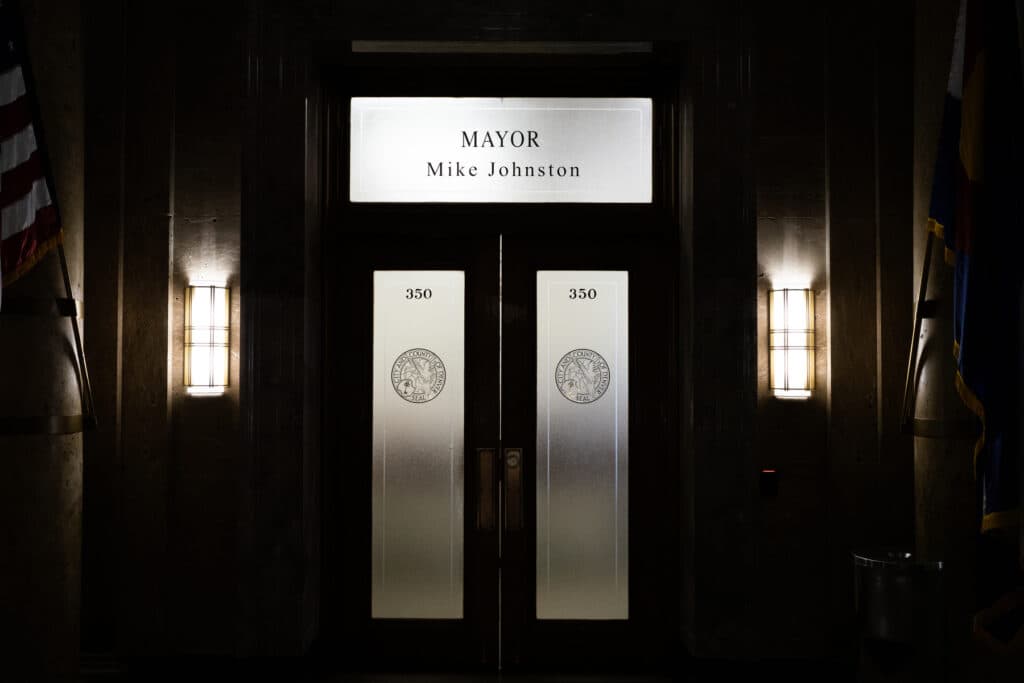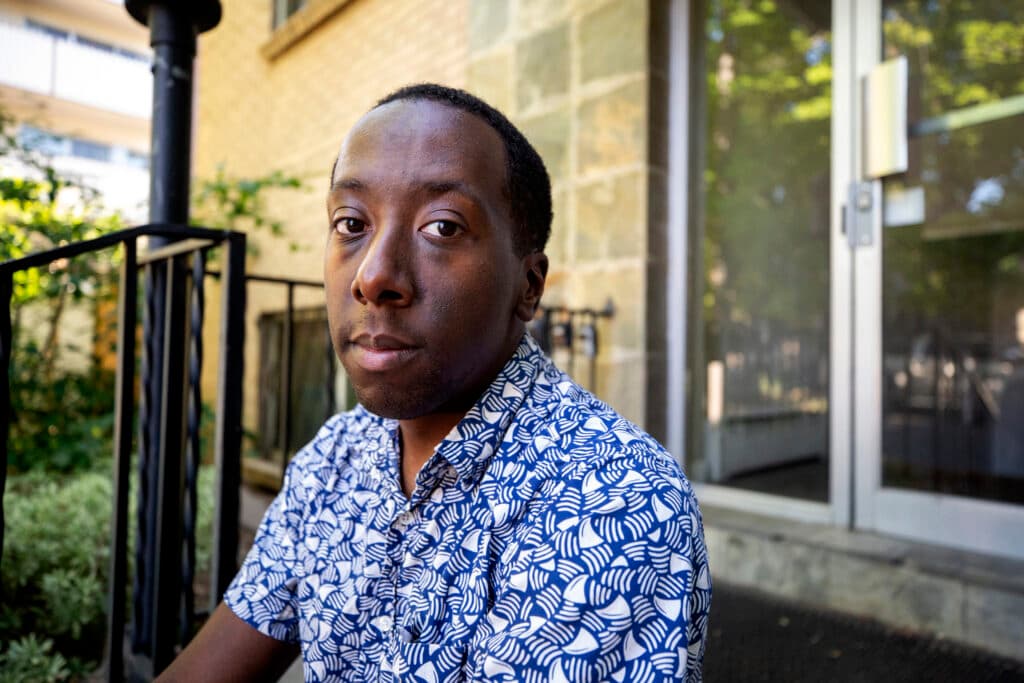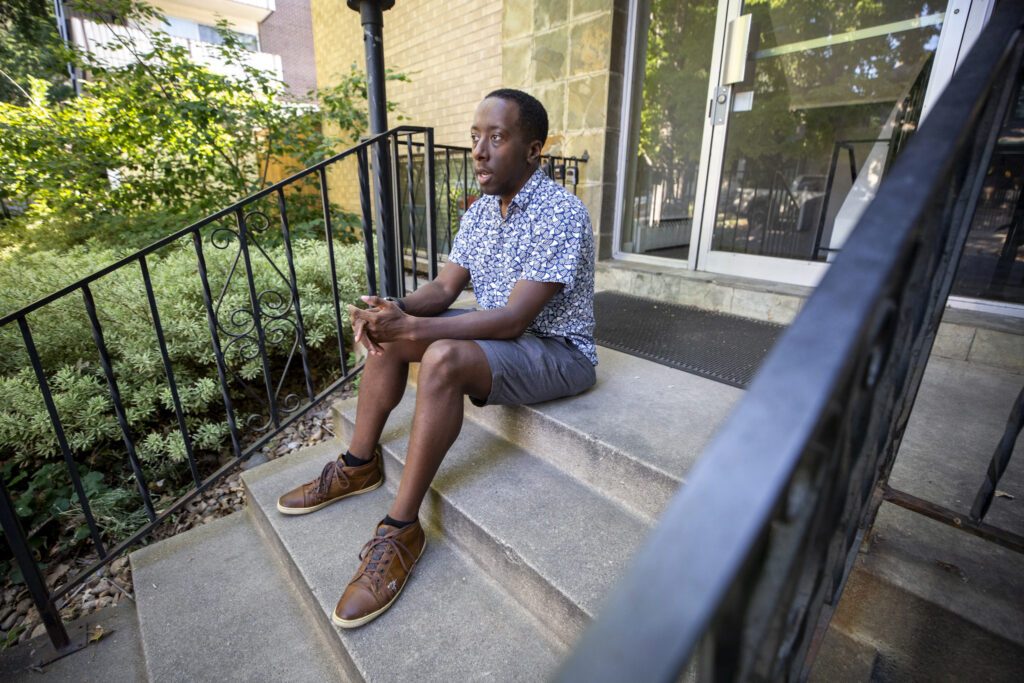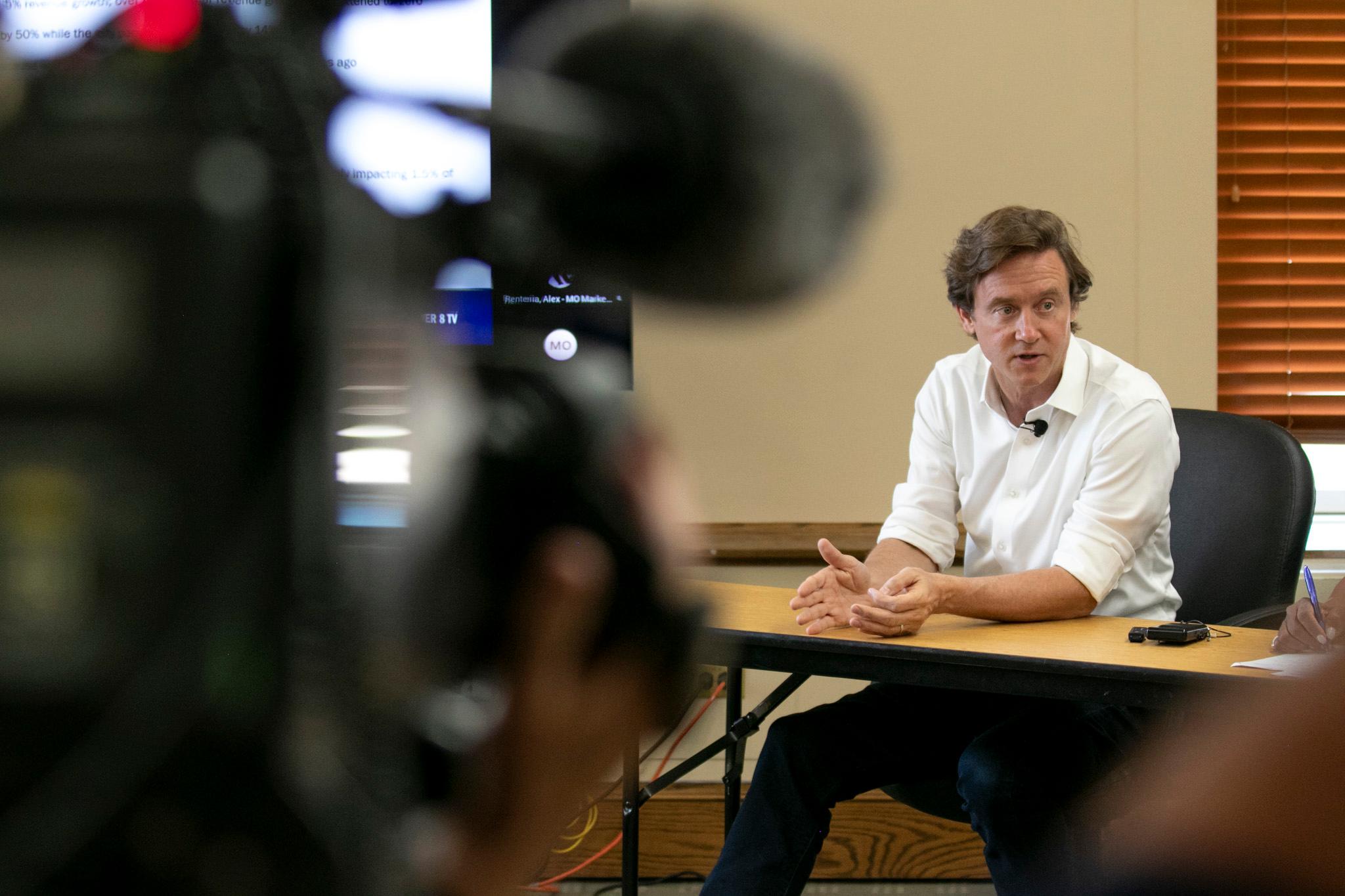Anna Valdez didn’t have to worry about layoffs — not until this summer.
The 53-year-old had worked for the city since she was a teenager. Her aunts, uncles and grandparents did, too. Her late grandmother was former mayor Federico Peña’s secretary, she said, and there’s a city library named for her late grandfather, Bernie Valdez.
She was the kind of institutional employee who enjoyed strong job protections. Seniority protections meant the longest-serving workers would be the last in line for layoffs.
“This city is really important to us, and I just think that we have stuck it out,” she said on Wednesday. “It’s not always been easy, but we stuck it out, because this is the rule — that once we put in our time, that we were going to be able to keep contributing.”
But the rules changed this summer. With a $200 million budget deficit looming, Mayor Mike Johnston pushed through a city-shaking change: seniority protections would be weakened. The goal, he said, was to keep the most skilled and talented workers, similar to how a business would handle layoffs.
Valdez, a plans review specialist in Community Planning and Development, was a victim of the change. On Monday morning, she watched the layoffs surge across the planning department, colleagues going offline one by one, until her time came.
She was laid off after 34 years in city government. The layoffs were remarkable for the number and for the range of people affected — from the youngest to the oldest, from the most veteran to the newest hires.
“I don’t even know if it’s sunk in yet,” she said. “I had a weirdly horrible, heavy feeling in my body. I had people calling me and telling me to breathe. It’s like somebody died suddenly, even though we were preparing for it.”
Efficiency or targeting?
The city laid off 171 people in all, its biggest cuts since the Great Recession. The city also closed nearly 700 open positions, tallying nearly 8 percent of the general workforce and $100 million of annual spending.
The losses included 36 of the most senior workers, those employed 10 years or longer. Denverite has heard from city employees about layoffs hitting people with more than 30 years of experience.
“I just don’t see how it could be without discrimination,” Valdez said. “It’s pretty obvious that this is just a way to get rid of people that are older.”
The change has fueled accusations of a “purge” by Clerk and Recorder Paul López. Councilmember Stacie Gilmore strongly implied that her husband, Scott Gilmore, and others lost their jobs because of retaliation.
The mayor has rejected those claims as “irresponsible and factually false,” and city leaders maintain that older workers were not targeted. The longest-tenured workers made up 21 percent of layoffs, but they also constituted a larger share, 25 percent, of the layoff-eligible workers.

“We had a very thorough and fair process that was non-discriminatory in terms of its impact,” Johnston said Wednesday. “I think you couldn't have asked for a more fair and balanced outcome in that way.”
Still, some city workers said the layoffs could deepen the divide between the Johnston administration, which took power in 2023, and employees who began their careers under earlier mayors.
Other laid-off employees asked how the city would replace their institutional knowledge.
“In most cases, the people who were laid off were the content area experts,” said a woman who lost her job in the Office of Children’s Affairs after nearly 20 years of city service, and who asked for anonymity because she feared reprisals against family members who still work at the city.
Other colleagues were cut after 20 years and 35 years, she said.
“I’ve been with the agency for so long, and also with the city for so long, people were constantly coming to me,” she said.
“Now, they don’t have somebody to come to,” she said.
Newer employees were still hit hard.
While the cuts to older employees were unusual in the city’s history, the layoffs still hit younger employees hardest. More than half of those terminated were in their first five years in the city. Some had worked just weeks or months.
Devin Mason joined the Denver Department of Transportation and Infrastructure in 2022. He wore multiple hats, like leading the city’s shared bikes and scooters program and DOTI’s participation in Bike to Work Day. For him, being a public servant was a point of pride.

“Public service has been my career,” he said. “I can probably count on one hand the number of months within my career … that I've worked in a private-sector capacity or in a capacity that wasn't at least semi-public.”
But on Tuesday, he was blindsided. Mason was one of 31 people at DOTI to be laid off, a decision that he still doesn’t understand.
"I was never clear on really how they were going about doing the layoff process, why my name was chosen as someone to remove from the city,” he said. “I've been a dedicated employee there for almost four years.”
Managers were ordered to rate the skills, ability and performance of their employees. Length of service made up 25 percent of the formula, while department leaders could adjust the weights of the other factors. In training materials, city leaders urged managers to use “documented, verifiable information only,” to be consistent and to record “clear, specific rationale for all scores,” among other advice.

But that was little comfort for employees like Mason.
Mason, who recently bought a condo, said he has no choice but to find a new job in Denver. He’s weighing a few options, including jobs in his field, and is loosely considering a run to challenge Councilmember Chris Hinds for a seat on the Denver City Council. Valdez similarly said she was considering a run for office.
Decisions about finances and lawsuits loom.
The layoffs come at an especially difficult time for public-sector workers.
Many other cities are struggling with their finances, too. State lawmakers are addressing a $750 million budget hole after President Donald Trump’s tax cuts. Federal agencies have shed thousands of jobs, and Trump’s cuts to grants have left few options in the nonprofit world.
“There couldn’t really be a worse time for this to happen,” said the former Office of Children’s Affairs worker, who has a young child. “I just never thought I would have to leave the city, not on my own terms, and to be thrust out here in this way is very disheartening.”
Kat Jarvis, a former deputy director at the Office of Children’s Affairs, wrote on LinkedIn that the layoffs came at a “particularly difficult moment” for her family. Her husband was diagnosed with stage 4 lung cancer earlier this year and requires intensive treatment.
“Losing my job and my health insurance in the midst of this has left me feeling unmoored in a way I haven’t in the past 15 years,” Jarvis wrote.
Laid-off city employees were given 30 days of pay and benefits. Medical, dental and vision coverage will continue through Sept. 30. They also will receive severance packages ranging from two to eight weeks, depending on their tenure.
However, in order to access those severance packages, city workers must sign a document that waives their rights to sue the city over their termination.
Several city employees told Denverite they were still contemplating that decision.
“I'm a little bit concerned with the fact that the severance agreement involves releasing the city from liability on pretty much anything employment-related, even discrimination,” Mason said. “That's a big concern to me.”













